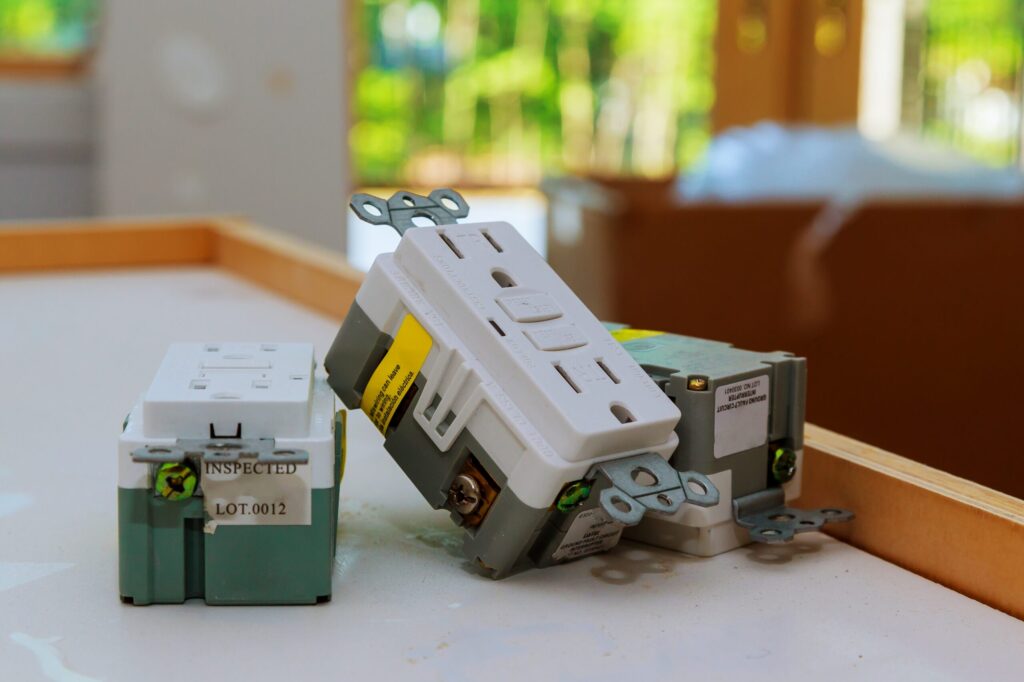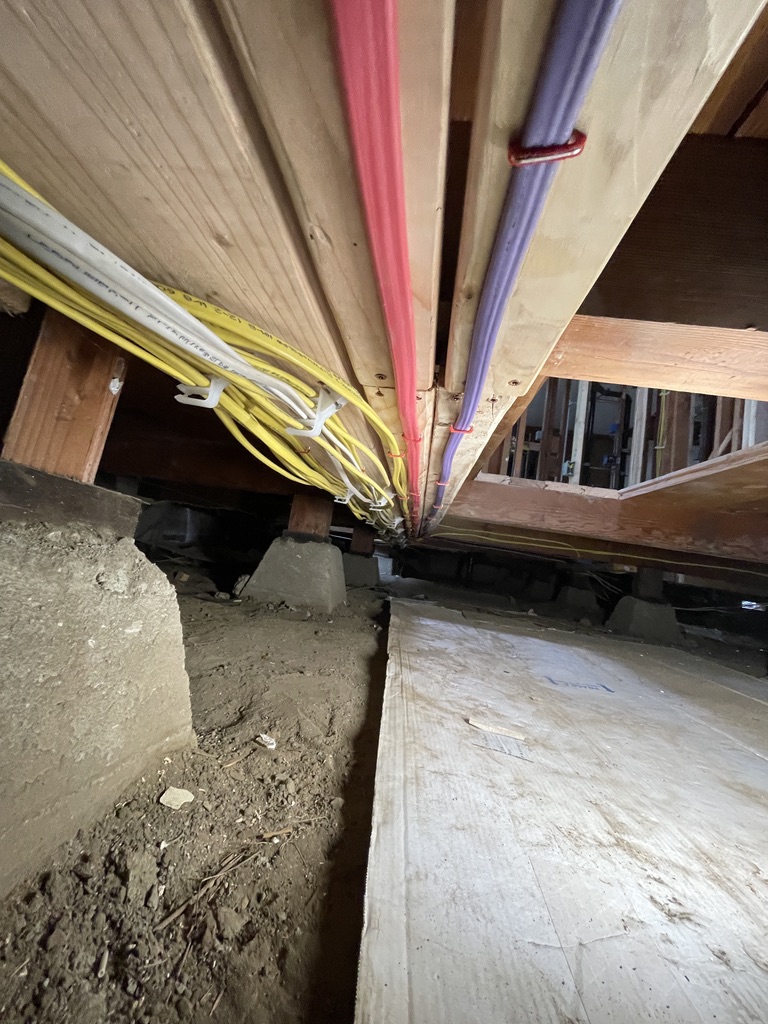Pros and Cons of Rewiring an Older Home
The charm and character of an older home are undeniable. The unique architectural details, the mature landscaping, and the sense of history are all part of the appeal of living in the beautiful, established neighborhoods of Felton and the Santa Cruz Mountains. However, this charm often comes with a hidden and significant challenge: an outdated and potentially hazardous electrical system. The wiring that runs silently behind your walls is your home’s central nervous system, and in a house built before the 1970s, that system may no longer be equipped to safely handle the demands of modern life.
This often leads homeowners to a major and sometimes intimidating question: is it time to consider a full home rewire? The process of replacing a home’s entire electrical system is a significant undertaking, and it is a decision that requires a careful and clear-eyed look at both the powerful benefits and the practical realities of the project. While it is a major investment, for many owners of older homes, the long-term gains in safety, functionality, and peace of mind are well worth the temporary disruption.
Understanding the Need: Why Rewire an Older Home?
To understand the value of a rewire, it is important to first understand the limitations and dangers of the outdated wiring that may be in your home. Electrical technology and safety standards have evolved dramatically over the decades.
Many homes built before the 1950s used a system called knob-and-tube wiring. While it was a functional system for its time, it has several major drawbacks by today’s standards. Its insulation, often made of cloth and rubber, becomes extremely brittle and can crumble away over time, leaving live wires exposed. Most significantly, knob-and-tube systems lack a ground wire, which is a critical, life-saving safety feature of all modern circuits. Another type of problematic wiring, sometimes found in homes built in the 1960s and 70s, is aluminum wiring. Aluminum is prone to corrosion and expansion at connection points, which can lead to loose connections that can overheat and create a serious fire risk.
Beyond the materials themselves, the simple design of these old systems is no longer adequate. They were created for a time before microwaves, central air conditioning, computers, and the countless other high-power devices that are a standard part of our lives today. Attempting to run a modern household on an electrical system from half a century ago can lead to constantly overloaded circuits, a persistent fire hazard, and a great deal of daily frustration.
The Pros: The Powerful Benefits of a Full Home Rewire
The decision to undertake a full home rewire brings with it a host of powerful and transformative benefits that can dramatically improve your home’s safety and functionality.
The single most important of these benefits is a monumental upgrade in safety. A professional rewire effectively eliminates the primary cause of electrical fires in older homes by replacing all of the old, degraded, and ungrounded wiring with a new, modern, and fully code-compliant system. This process also includes the installation of the latest generation of electrical safety devices. This includes Arc Fault Circuit Interrupters (AFCIs), which are designed to prevent fires by detecting dangerous electrical arcs, and Ground Fault Circuit Interrupters (GFCIs), which protect you and your family from a severe electric shock in areas like kitchens and bathrooms. It is an investment that provides an unparalleled level of peace of mind.
In need of some GFCI outlets. Click here to learn more.

A rewire also provides a massive increase in your home’s electrical capacity and functionality. The project almost always includes upgrading your main electrical service panel, often from an old 60 or 100-amp panel to a modern 200-amp service. This gives your home the robust capacity it needs to safely power all of your modern appliances and devices. It is also the perfect opportunity to redesign your home’s electrical layout for how you actually live. You can add as many outlets as you need in every room, completely eliminating your reliance on a web of unsightly and hazardous extension cords. It also allows for the easy installation of dedicated circuits for major appliances like an electric vehicle charger, a hot tub, or a new electric range.
Click here to learn more about upgrading your electrical panel.
Finally, a home with a brand-new, fully permitted, and professionally inspected electrical system is a huge asset. It significantly increases your property’s value and makes your home far more attractive to potential buyers should you ever decide to sell. It can also make your home much easier and sometimes cheaper to insure, as many insurance companies are increasingly hesitant to provide coverage for homes with known outdated wiring systems.
The Cons: The Realities of the Rewiring Process
To make an informed decision, it is just as important to have an honest and realistic understanding of the challenges that come with a full home rewire. While the benefits are immense, it is a major construction project with significant costs and disruptions.

The most significant consideration for most homeowners is the cost. A full home rewire is one of the more expensive renovation projects you can undertake. The final price will depend on a variety of factors, including the size and age of your home, the complexity of the existing structure, and the extent of the new system you are installing. It is a major investment in your home’s infrastructure.
Beyond the financial cost, there is the reality of the disruption to your life and your home. A rewire is, by its nature, a very invasive process. To replace the old wires and run the new ones, electricians will need access to virtually every room in your house, and they will need to cut a series of strategic holes and channels in your walls and ceilings. This means your home will be an active and often messy construction zone for the duration of the project, which can last for a week or more.
It is also critical to understand what is, and is not, included in an electrician’s scope of work. The electrician’s job is to install the wiring and the electrical devices. After their work is complete, you will be left with a series of holes and cuts in your drywall or plaster. The homeowner must then budget for a separate drywall contractor to come in and professionally patch all of these openings, and then a painter to repaint the affected walls and ceilings. This repair work is a necessary and significant part of the total project cost and timeline that is often overlooked in the initial planning.
The Rewiring Process: What to Expect
Knowing what to expect can help to demystify the process and reduce the stress of a major project. The process begins with a detailed planning phase, where you will work with your electrical contractor to design the new system and receive a firm, detailed quote.
The main part of the work is the “rough-in” phase. This is when the electricians will run all of the new, modern wiring throughout your home, from the panel to every switch, outlet, and light fixture location. They will also install all of the new electrical boxes in the walls and ceilings. In most cases, the old, deactivated wiring is left in the walls, as it is often safer to abandon it in place than it is to cause more damage by tearing it all out.
After the rough-in is complete and has been inspected, the drywall and painting repairs can be done. Once the walls and ceilings are restored, the electricians will return for the final “trim-out” phase. This is when they will install all of your new switches, outlets, cover plates, and light fixtures, and will make the final connections in your new service panel. After this phase, the work will undergo a final inspection by your local building authority to ensure it is fully compliant with all safety codes.
Click to learn more about our home rewiring service.
The decision to undertake a full home rewire is a major one, and it requires a careful balancing of the pros and cons. The cost is significant and the process is disruptive. However, the benefits of a massive upgrade in safety, a dramatic increase in functionality, and a significant boost to your home’s long-term value are powerful and compelling. For many owners of the beautiful older homes in our community, it is a necessary and wise investment in the future of their property.
Making this decision requires an expert and honest assessment of your current system’s condition and your family’s future needs. If you are concerned about the state of the wiring in your older home, we encourage you to contact the licensed and experienced professionals at Beach Electrical. We can provide a comprehensive safety inspection of your Felton home and help you weigh all of the options, empowering you to make the best and safest choice for your family.

